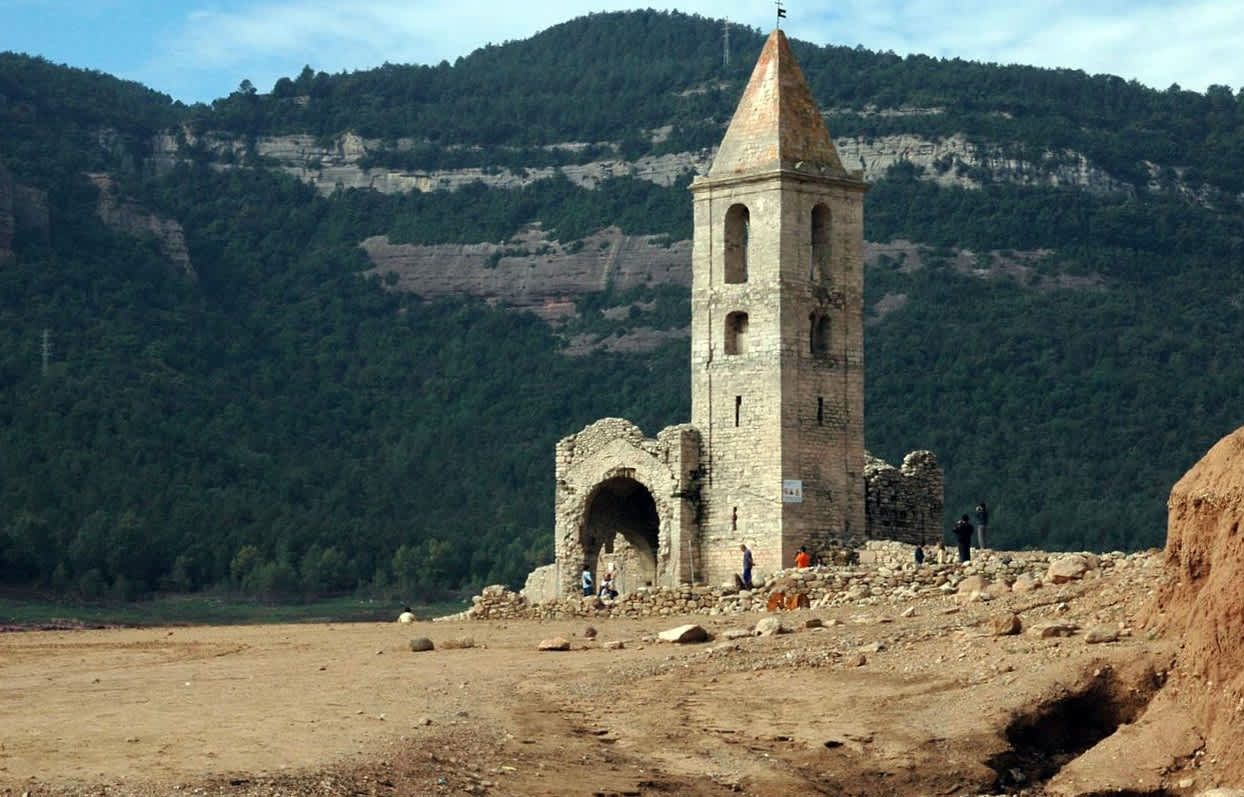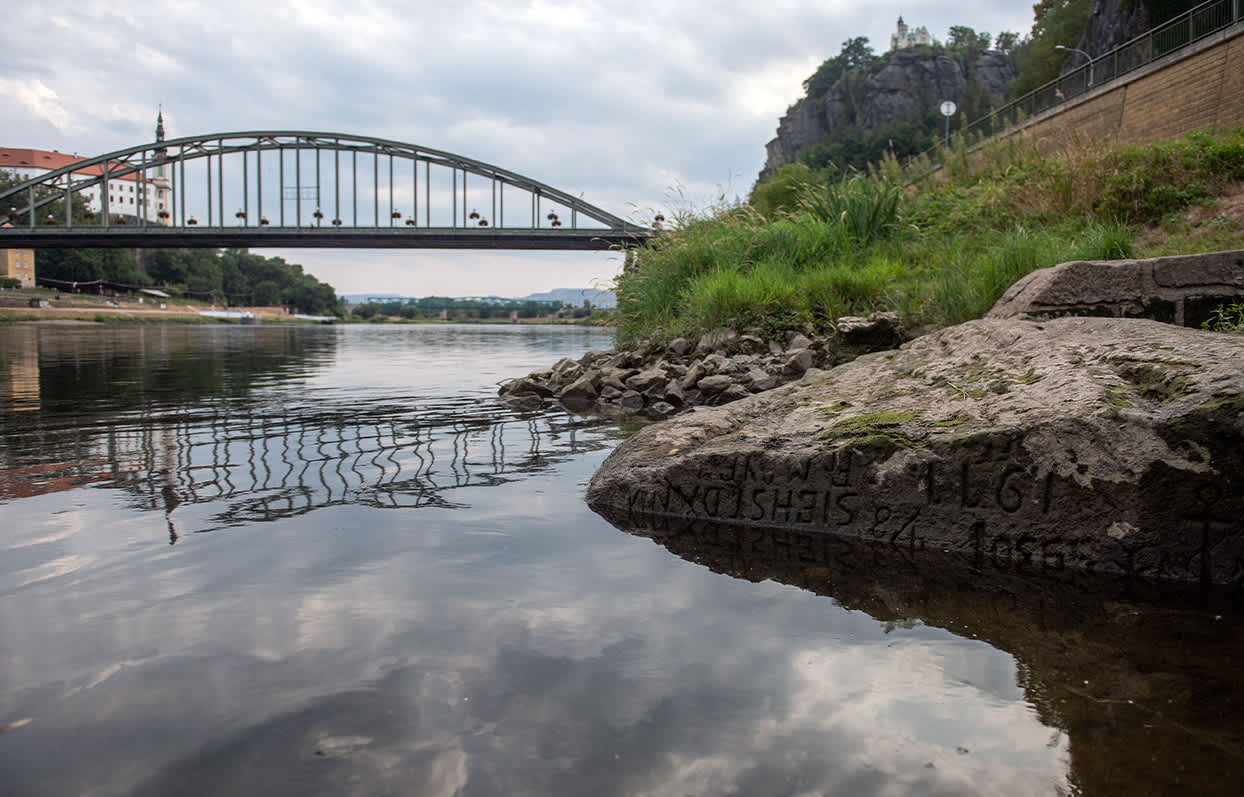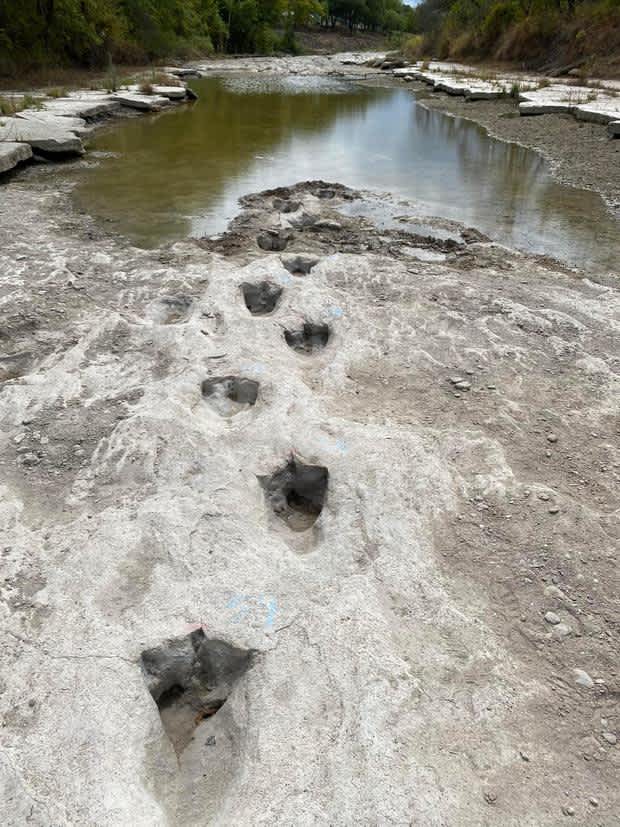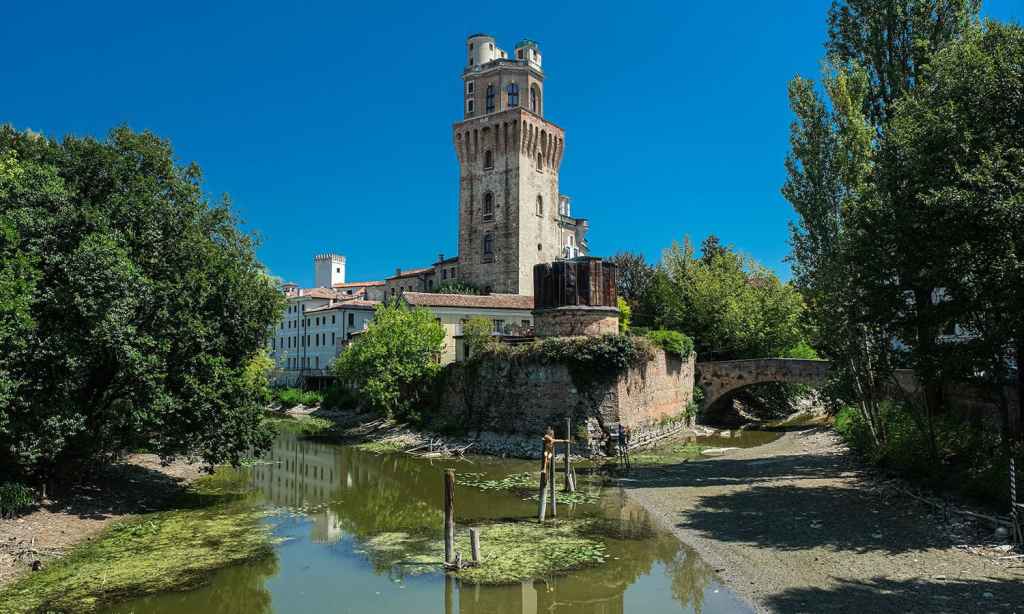Here’s a fun fact: Europe is currently experiencing the worst drought its had in 500 years. According to the latest report from the Global Drought Observatory, nearly half the landmass on the continent is at ‘warning’ level, with soil entirely dried up, while a further 17% is at ‘alert’ level, where plants show signs of distress.
At the same time, on our side of the globe, it seems like all the water Europe should have been getting has been dumped across much of our own continent. It’s yet another bleak reminder of the slow collapse of the planet as our leaders continue to fail to address climate change anywhere near drastically enough.
But just because the planet is dying doesn’t mean we still can’t have some fun.
As rivers, damns, and lakes dry up across the world, weird stuff that has been submerged for years has started to surface. And humans, being inquisitive creatures, have of course flocked to take a look at that weird stuff.
Earlier this week we saw the re-emergence of the Church of Sant Romà de Sau from the waters of the Sau Reservoir north of Barcelona. This church was sunk under a dam by the Franco regime to provide water to the local population. In normal times, only the cross at the top of the tower is visible. Now though, as prolonged drought grips Spain, the entire church is not only visible but visitable.

Across Europe, it’s a similar story. Throughout Germany and the Czech Republic, normally submerged ‘hunger stones’ are popping up in dry river beds. These stones, some of which were laid down hundreds of years ago, bear inscriptions warning of famine and hunger in the future if the water recedes to the level that they’re now visible.
Ominously, one stone in the Elbe River, near the northern Czech town of Decin, has the words “Wenn du mich siehst, dann weine” carved into it, meaning ‘if you see me, then weep.’ While these stones are very occasionally visible, they only become so when the water is dangerously low.

Other surprises to emerge from the waters include the ruins of a bridge thought to be nearly 2000 years old, built in Rome across the River Tiber for Emperor Nero.
In Serbia, the Danube River has dried so much that Nazi-era German warships, still packing explosives, have been exposed to the low water level. Some 20 of these ships were sunk during WWII and have laid at the bottom of the river ever since.
China too is seeing long-lost relics of the past reemerge. In the southwestern city of Chongqing, a group of Buddhist statues has been revealed that normally lie under the waters of the Yangtze. Thought to be around 600 years old, the carvings of monks sit on the side of an island in the river which is around 45% lower this year than it usually is.
Heat wave sweeping China. Yangtze River water level in Chongqing dropped to unprecedented levels, revealing ancient rock carvings of Buddha figures. https://t.co/K455b7eFqk
— Carl Zha (@CarlZha) August 22, 2022
In the US, similar heatwaves and droughts have brought all sorts of bizarre things to the surface of lakes and dams, including guns, human skeletons, ancient arrowheads, and sunken boats which have been found in the partially dried out Lake Mead.
In Texas, Dinosaur Valley State Park announced that footprints left in the bed of a now dried-up river are likely that of a long-extinct dinosaur. Park Superintendent Jeff Davis told USA TODAY, “either haven’t been seen for decades, or you know, that maybe haven’t been seen by anybody in anyone’s living memory”.

Related: In an Aussie First, a Federal Environment Minister Might Reject a Coal Mine
Related: How To Turn Climate Anxiety Into Action That Makes a Difference
Read more stories from The Latch and subscribe to our email newsletter.







